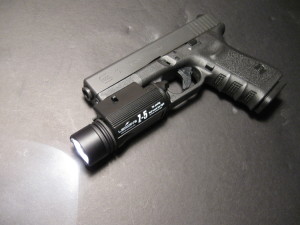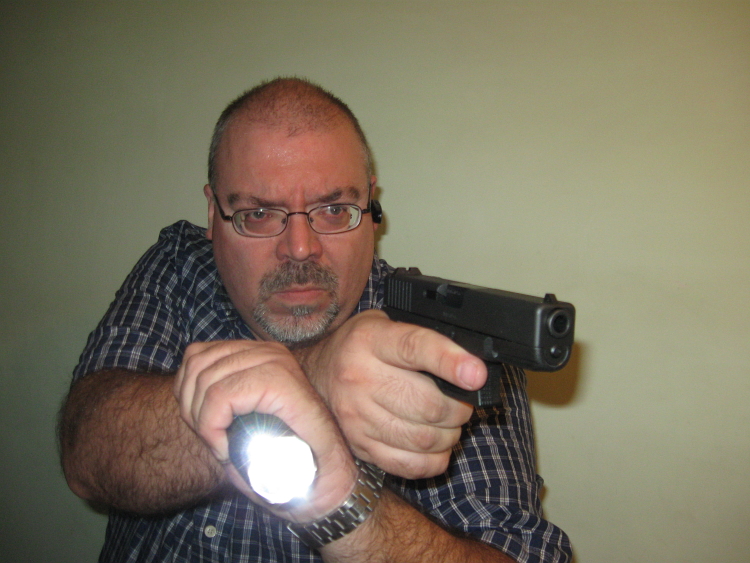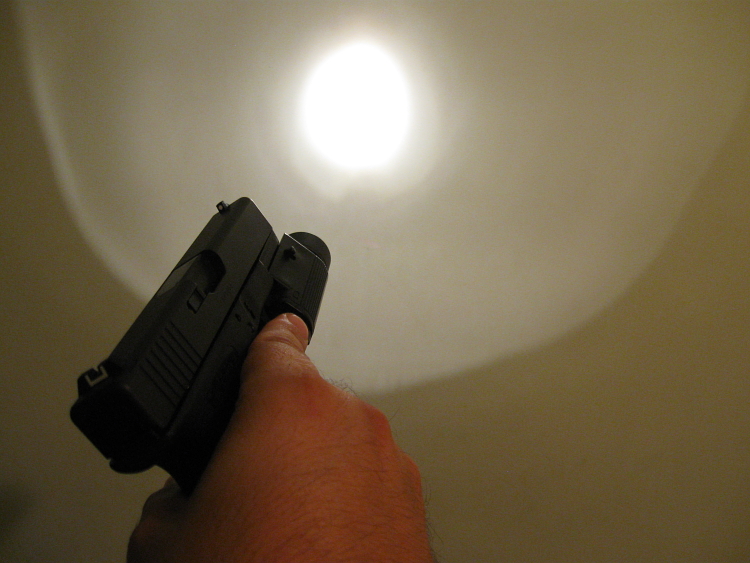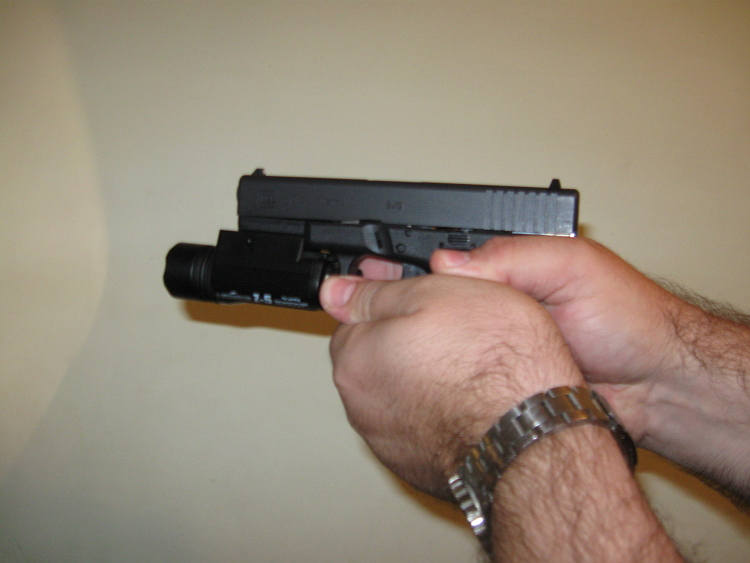 The choice to mount a light to your gun, if it has accessory rails (and sometimes even if it does not, depending on the system you use) is determined, in far too many cases, by whether or not the owner thinks the accessory is “cool.” It’s a fact that you need a light for use with your firearm. Many self-defense scenarios occur in low-light conditions, particularly home-invasion and burglary scenarios (the very scenarios that prompt many to keep handguns in the first place.) Please examine closely how I said that: You should always have a flashlight to use WITH the gun. But should you mount it, or not?
The choice to mount a light to your gun, if it has accessory rails (and sometimes even if it does not, depending on the system you use) is determined, in far too many cases, by whether or not the owner thinks the accessory is “cool.” It’s a fact that you need a light for use with your firearm. Many self-defense scenarios occur in low-light conditions, particularly home-invasion and burglary scenarios (the very scenarios that prompt many to keep handguns in the first place.) Please examine closely how I said that: You should always have a flashlight to use WITH the gun. But should you mount it, or not?
There are methods for using a flashlight with a gun, of course, and that means occupying the off hand with the light. You probably already also know that you don’t just turn the light on and stand there, drawing fire; you blink the light briefly and then move, assessing the situation as you go. You can do this with a handheld flashlight fairly easily, bracing the gun over the top of the light-bearing wrist. But what if you want a two-hand grip on the gun? What if you need to use your off hand for something else (such as carrying a child)?
Mounting the light to the gun solves these problems, but at the price of creating one or two new ones. You see, when you mount the light to the gun, you lose the ability to point your light at something you are not also covering with the barrel of a loaded pistol. This can be an issue; you don’t particularly want to wave the snout of a gun every place you might need light for utility purposes. A separate flashlight eliminates that potential danger.
Much more importantly, however, the typical light-mounted guns have switches that cannot be reached with your thumbs. If you use your trigger finger, you can activate the switch on the strong-hand side, but it’s not a wise choice to be monkeying around activating small, trigger-shaped switches in low-light conditions — it’s only a matter of time before you manage a negligent discharge.
Using your off-hand thumb is preferable, but will usually require you to reposition your supporting grip (if only slightly) on the weapon. I consider this the lesser of the available evils, but be aware that you must change your grip when activating the light in this manner. This runs afoul of a completely consistent training methodology, which says you should train and employ the same grip all the time.
Lights that have pressure switches are a means — at least in the minds of some — of having the best of both worlds, eliminating the need to change your grip while keeping the light on the weapon. I generally dislike having cords and such hanging off a gun, though, because they represent a point of failure and may snag. Some integrated designs eliminate the cables, but this is more common on long guns (such as shotguns with integrated light-equipped fore-ends).
Every accessory choice you make with a firearm is a trade-off. No matter what you choose to do, make sure you train with your weapon under realistic conditions and with the feedback of a qualified instructor. Only by testing your gear can you ensure that it will work as intended when you need it. Even with testing, there is always an element of risk, for no equipment is infallible.



EVERYONE needs to have light(s),,,and PLENTY of them. My personal preference would be hand held. Just because I want to identify a noise does NOT necessarily mean I want to shoot that same noise. IF the light is mounted to the gun, where the muzzle goes, so goes the light. Bad idea?
I hate to see folks buy crap when it comes to lights. Personally, I have quite an array, giving me great options to choose from.
*** I have defused 1 very UGLY situation on the street with just the use of a hand held light. Blinding an opponent is a great tactical advantage.
you are right about the whole not wanting to aim the gun at any noise, but generaly you dont pull a firearm for no reason. meaning you pulled it to protect yourself, so you have every right to point the weapon in that direction to make sure it is safe. i have an incredibly bright flashlight i got from a cop i used know, and using the strobe does alot of damage. unfortunately in canada we are not allowed to concealed carry, or carry at all, so the pistols are for home protection only.
Good thoughts. I currently keep a tactical light, which is screwed into the end of an ASP at the ready, near my firearm in the event, GOD FORBID, I need it. I feel comfortable I could shoot reasonably well using the grip you pictured, but should probably practice this at the range! I also have an incredibly bright (million candlepower?) spotlight that sits upright on the ground with a full charge, aimed in the general direction someone would come if they broke into my small apartment. I have been considering purchasing a light to mount on the rails of my pistol and will consider your comments when I do so. I agree with the wire and pad on the handle; I don’t like it. Thanks for the thoughts.
I do not think that this is an either or type of question. Along with handheld and mounted lights both having downsides, they also both have upsides. So, you should have both. There are situations where one is better than the other. I would say that in most cases you should be using a handheld light so you gun is never pointed at targets that you are not ready to shoot. Since you wrote this article there have been some new types of switches for mounted lights, I have recently done made up a comparison guide for handgun lights, check it out.
Shining a light towards the ceiling lights up whole room at floor lights up small area you never need to point it while searching if you find someone then that’s different but to just search and identify you’ll never need to point directly